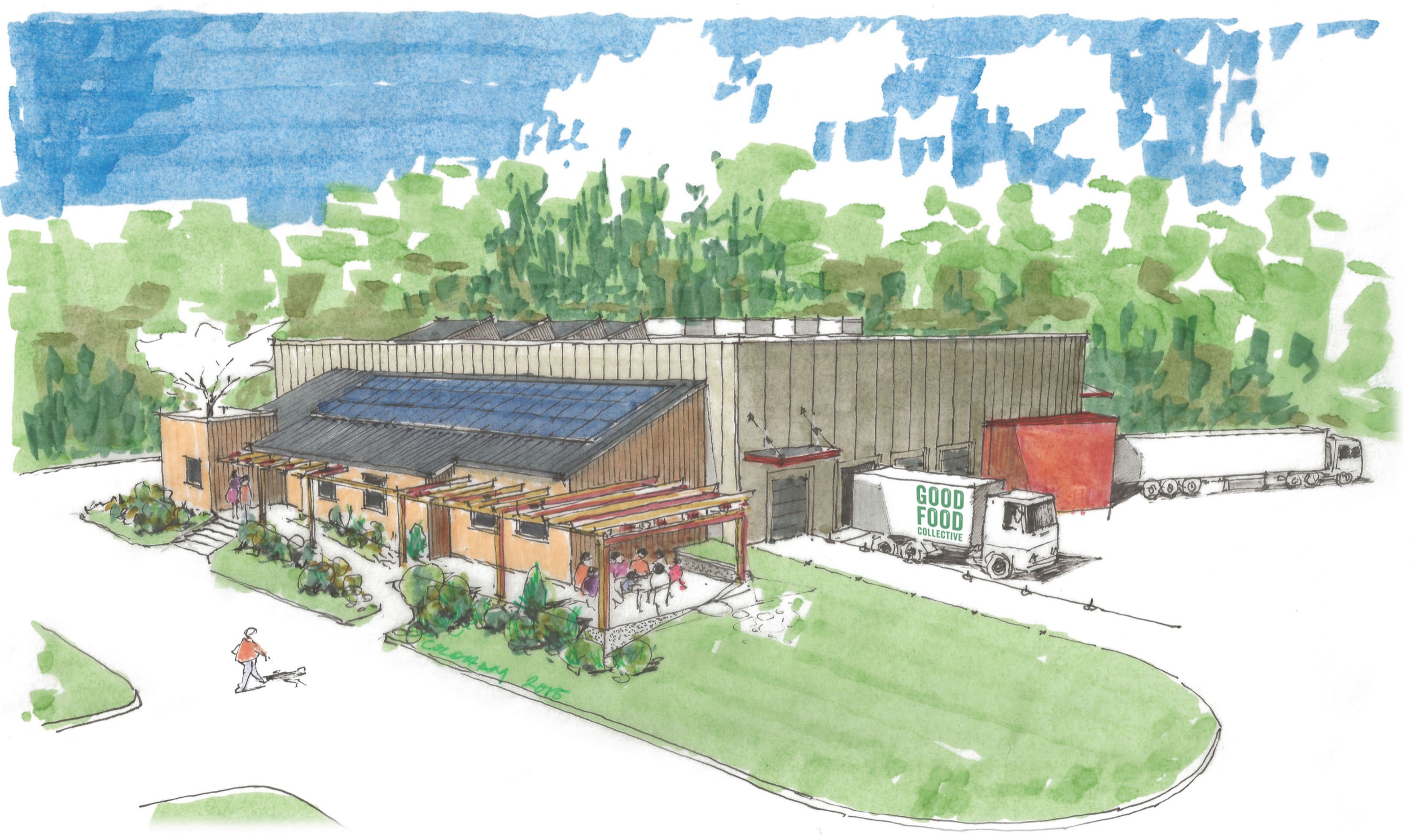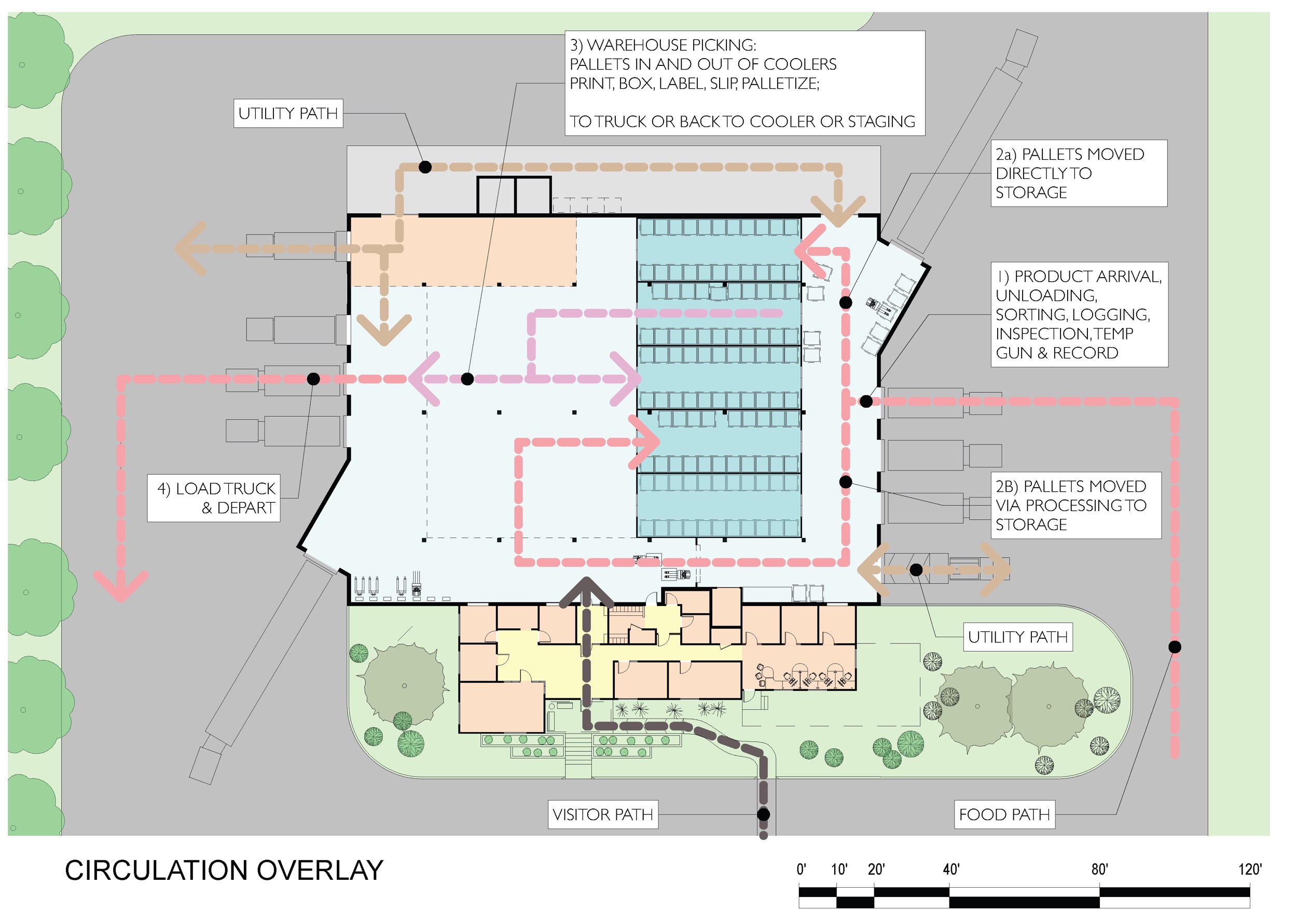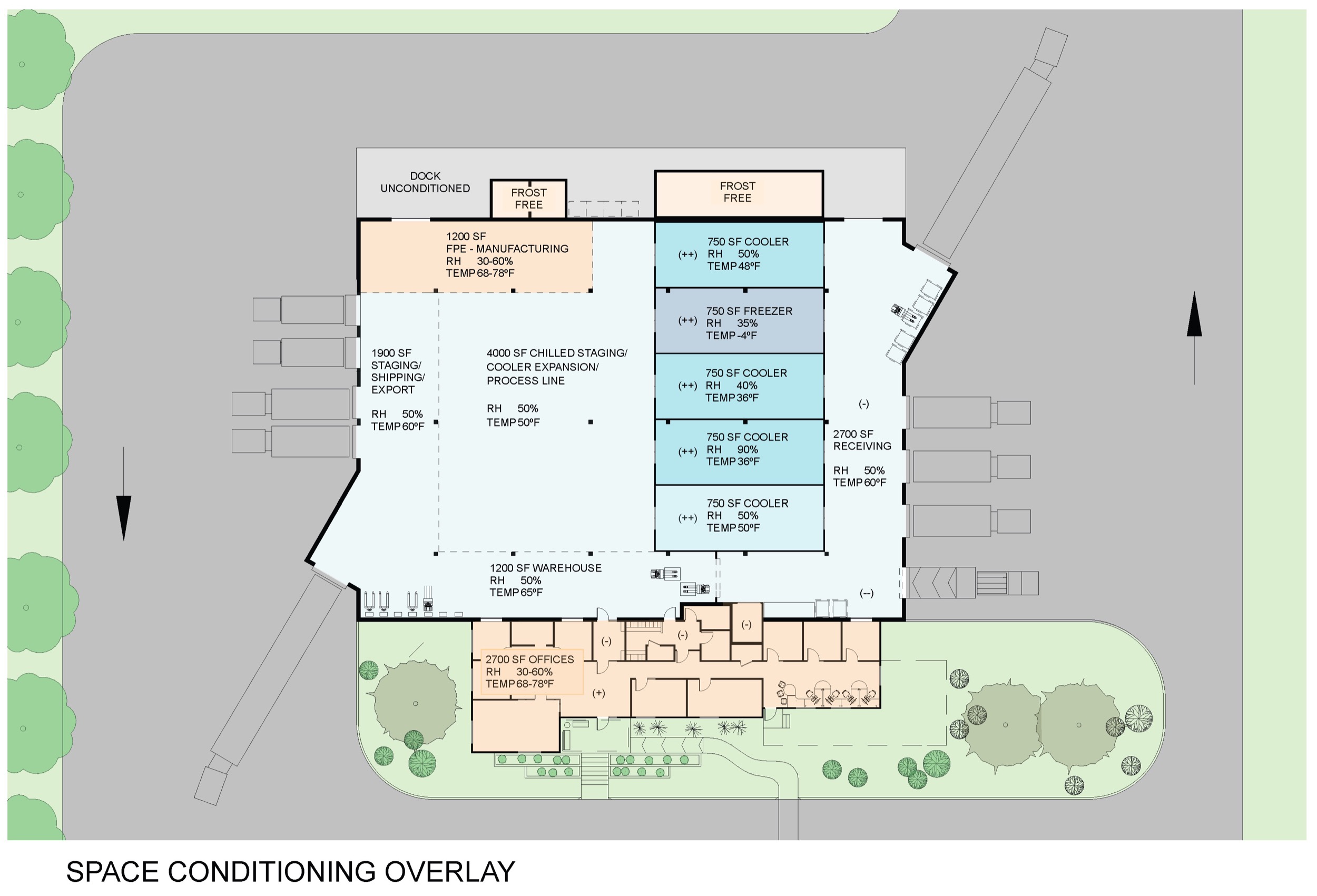Educational & Commercial
Headwater Foods Feasibility Study

Headwater Foods is a Certified B Corporation in Upstate New York that works to strengthen the health and viability of a locally based food system.
C&H collaborated with 9×30 Design to explore expansion possibilities for Headwater Food’s headquarters, either at their present location, or in the Wayne Industrial Sustainability Park in Ontario, NY, which offers resident businesses access to site generated renewable energy.



Headwater Foods acts as a distribution hub for the produce of regional farms and food producers, supplying to grocers, restaurants, and directly to local families through their Good Food Collective program.
Our feasibility exploration included a full landscape scan and asset map of the region to assess farms and farm infrastructure, market research on sustainable, fresh, and processed local foods, quantification of existing local produce supply and opportunities with partner farms, and documentation of food safety compliance (HAACP) to be incorporated into the operations and facility plan.
Project Details
Headwater Foods will be expanding their regional Food Hub. We looked at designs that maximize space efficiencies and minimize energy consumption. Phase 1 consists of a 10,000-20,000 SF building in combination with initial site improvements and infrastructure build-out. The schematic plan was specifically designed around the standard North American pallet size.
The chosen Phase I construction scheme would allow all branches of Headwater Foods to move into the facility at the same time, eliminating redundant administration and equipment needs, and therefore conserving budget.
The facility was designed to welcome visitors with an inspiring, ecologically sensitive form at the helm of its larger warehouse facility. The entry point drops drown to meet the rising landform and includes outdoor seating, gardens, and spacious meeting spaces.
Sustainable design elements include reclaimed and recycled content building materials, a green roof, on-site permaculture garden and composting facilities, and electric vehicle charging stations.
Natural day-lighting & daylight sensors optimize overhead LED lights at 80-100 foot candles in working areas and 40-50 fc other spaces. Occupancy controls minimize electric loads when spaces are not in use.
A thermally broken concrete floor slab maximizes cooler efficiency. Cascading pressurization maintains cleanliness & segregation of space conditions by assuring positive pressure in clean areas (such as greens washing) and leading to negative pressure dirty areas (such as the dock hosting garbage collection).
Modular proportions of the warehouse optimize square footage & flexibility for reorganization and future expansion. Floor drains provided throughout allow reconfiguration of coolers and warehouse into various processing and storage arrangements.
All supply piping, electric, & refrigerant lines are run overhead to allow for maximum flexibility.
Project Team
Collaborating Architect
C&H Architects
Collaborating Architect
Project Coordinator